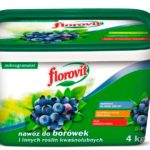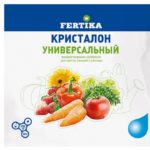Blueberries are a shrub that prefers wetlands and acidic soil. But this does not mean that she does not need micronutrients. After all, to grow a bush with a height of 2 meters, you need a lot of strength and energy not only for the plant itself, but also for its owner, which provides optimal growth conditions.
Feed the bushes can be in the autumn and spring. And each season has its pros and cons. Moreover, some fertilizer complexes require gradual application, stretching for a whole season.
Table of contents
The need to fertilize blueberries in the fall
It is recommended to produce blueberry fertilizer in the fall only after abundant watering so that the soil is distinguished by high humidity. Phosphorus and potash fertilizers are applied. While nitrogenous feedings should not be added this season, it is better to use them in the spring. Because the result will be an active growth of greenery. And our shrub will not have time to move to the cold and prepare for wintering.
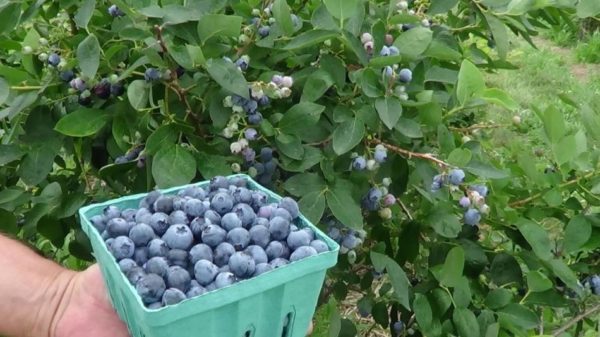
Signs of micronutrient deficiencies
If a blueberry lacks one or another microelement, its appearance immediately becomes noticeable. Namely:
- nitrogen - there is a slowdown in the growth of the shrub, the foliage turns yellow, and sometimes even gets a red tint;
- phosphorus - foliage survives to the stem, changing color to purple;
- calcium - leaves are deformed, and yellow at the edges;
- potassium - the foliage dies off, and the tops of the young pubbies dry;
- magnesium - leaves everywhere acquire a red tint;
- boron - the growth of shoots ceases, foliage becomes blue;
- iron - foliage turns yellow into a green grid;
- sulfur - leaves turn gray, and then they may turn white.
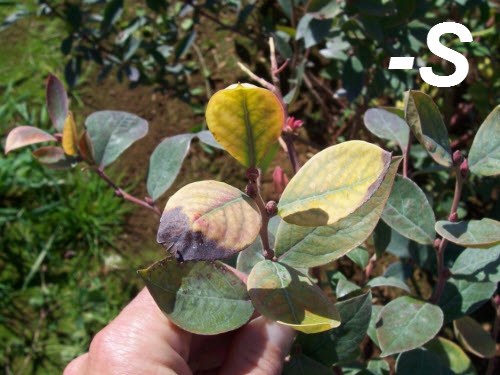
Dates for autumn dressing
Experts advise to fertilize the soil at a set time. Thus, nitrogenous compounds are used in three stages: 40% during the initial sap flow in early spring, 35% in May and 25% in June.
How to fertilize blueberries in the fall
Blueberries are a fairly demanding shrub that needs a full range of beneficial microelements.
The amount of nutrients introduced into the soil will depend on the following factors: the age of the shrub, the acidity of the soil, the irrigation schedule, the presence of mulch and external signs of a lack of one or another component.
If blueberries fruit well and the bushes look healthy, it is not necessary to analyze the soil. Everything is clear.When the crop deteriorates or decreases, you need to use special fertilizers. And what exactly, we will talk further.
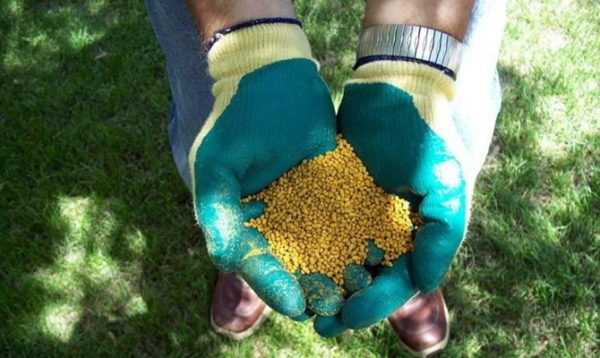
Nitrogenous fertilizer
Nitrogen is a fundamental component that ensures the growth and development of blueberry as a shrub. Without it, or when it is lacking, the foliage turns yellow, the berries become small and the harvest is less. Most often, ammonium sulfate is used as nitrogen-containing food complexes. Urea and other types of nitrate are introduced less frequently.
It should be understood that the use of such a composition should be made correctly. Hit of nitrogenous fertilizers on leaves of a bush and its root is strictly forbidden. Nitrogen is diluted with water, watering the soil around the stem of the blueberry at a distance of not less than 0.2 m.
If you purchased fertilizer in the form of granules, it is better to make it initially when planting plants. And for the annual fertilizer by uniform distribution of top dressing, always diluted with water, not near the bush, but a little further, so as not to damage the root system of the culture.
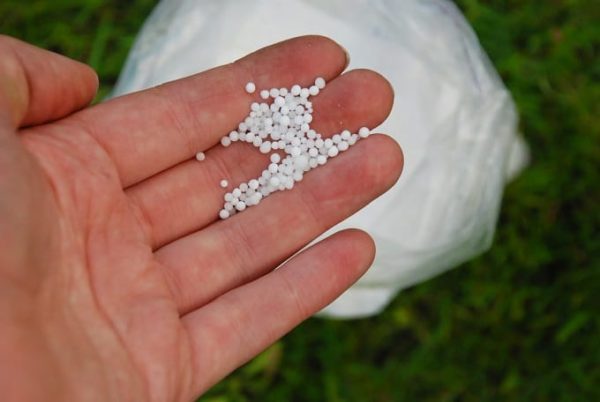
Phosphate and potash mixes
To improve the stability of blueberries to various plant diseases and improve the life resistance of the shrub, the soil should be fertilized with phosphorus. Plus, in this case, improve the taste of the fruit and increase the yield. When this trace element is not enough, there is a pressing of the foliage to the stem, and the foliage becomes purple.
Phosphate-containing dressing is often superphosphate. To feed the bush you need to make about 100 g of the composition.
To increase the resistance of the plant to a sharp decrease in temperature and allow moisture to stay longer in the soil, you need a sufficient amount of potassium in the soil. Moreover, potash fertilizers make the plant stronger confronting a variety of diseases. For an adult blueberry bush you need 30-40 g.
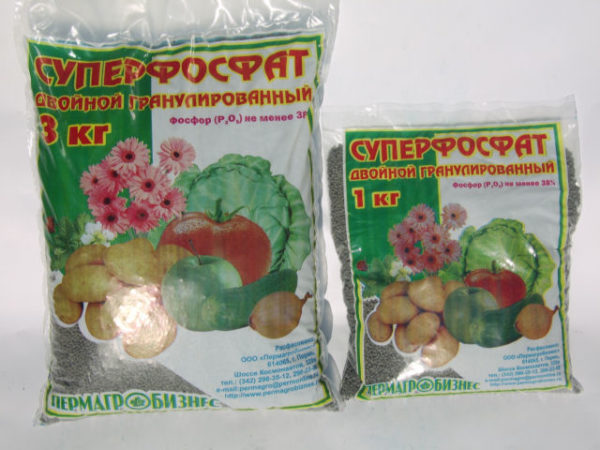
Complex options
Nitrogen, potassium and phosphates are important trace elements for any plant. But there are other equally necessary in the process of growth of blueberry trace elements. These are calcium, iron, boron and magnesium, without which it is indispensable. That is why experts recommend making complex fertilizers annually to compensate for the lack of various useful nutrients.
Although you should pay attention to the fact that without the need to use dressing is not worth it. It's too much. And for blueberries, if necessary, you need to buy complexes for fruit and berry plants.
When, when feeding, apply universal remedies, the lack of a specific trace element will be visible. It is necessary to fill it with the shortage. In appearance the specialist will immediately determine this.
Crystone Application
It is recommended to use Kristalon for foliar nutrition of the shrub during the vegetative period. In this case, a bucket of water accounts for about 40 g of substance, repeating the procedure in 2-3 weeks. This concerns the use of Crystalone special.
- Florovit for blueberries
- Universal dressing target for use on blueberries
- Fertilizer for Blueberry Crystal
Already a couple of weeks before harvest, it is advised to fertilize the bushes with Crystalon brown. But for one bucket of water you need to add 20 g of money.
Now you are well aware of exactly how and by what means it is worth feeding blueberry bushes. Everything has its time and it is important to correctly apply fertilizers with useful trace elements to the soil. Otherwise, you can only exacerbate the problem and even destroy the plant. Be careful, fertilizers - a thing useful and necessary, but only in the right hands.

